Has Xiaomi's robot buddy gotten smarter? We revisit CyberOne, the humanoid robot that promised emotional intelligence and groundbreaking mobility. This update brings CyberOne's recent progress, exploring its new capabilities and how Xiaomi is pushing the boundaries of human-like robotics.
Earlier this year, we wrote about some groundbreaking features and potential of CyberOne. As we progress further into the era of robotics, it's time to revisit CyberOne and explore the advancements and improvements made since its initial unveiling. This update highlights the recent progress and new capabilities of CyberOne, underscoring Xiaomi's continued commitment to innovation and excellence in robotics.
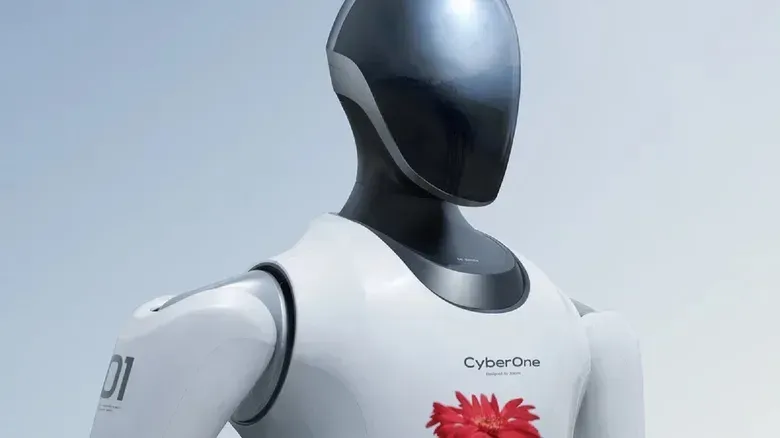
Take a look at our article from January
Recap of CyberOne’s Initial Features
Human-like interaction has always been a standout feature of CyberOne. The robot is designed to recognize emotions and gestures, allowing it to engage in basic communication with humans.
This capability positions CyberOne as not just a tool, but a companion capable of understanding and interacting with its environment in a meaningful way.
Advanced mobility is another significant aspect of CyberOne. The robot showcases impressive bipedal motion and dexterity, emulating human movements with remarkable precision.

This mobility enables CyberOne to perform a variety of tasks and navigate different environments, making it versatile and highly functional in various settings.
At the core of CyberOne is its AI integration. Powered by advanced artificial intelligence, CyberOne can learn and adapt autonomously. T
his allows the robot to improve its performance over time, making it more efficient and effective in carrying out its tasks. The combination of AI and robotics in CyberOne underscores Xiaomi's commitment to pushing the boundaries of technology and innovation.
Recent Advancements
CyberOne has seen several significant advancements since its initial introduction. These improvements have further enhanced its capabilities, making it an even more valuable asset in various applications.
Improved Mobility and Strength: The joint actuators in CyberOne have been enhanced, providing greater flexibility and power. This allows the robot to perform more complex movements with higher precision and strength.
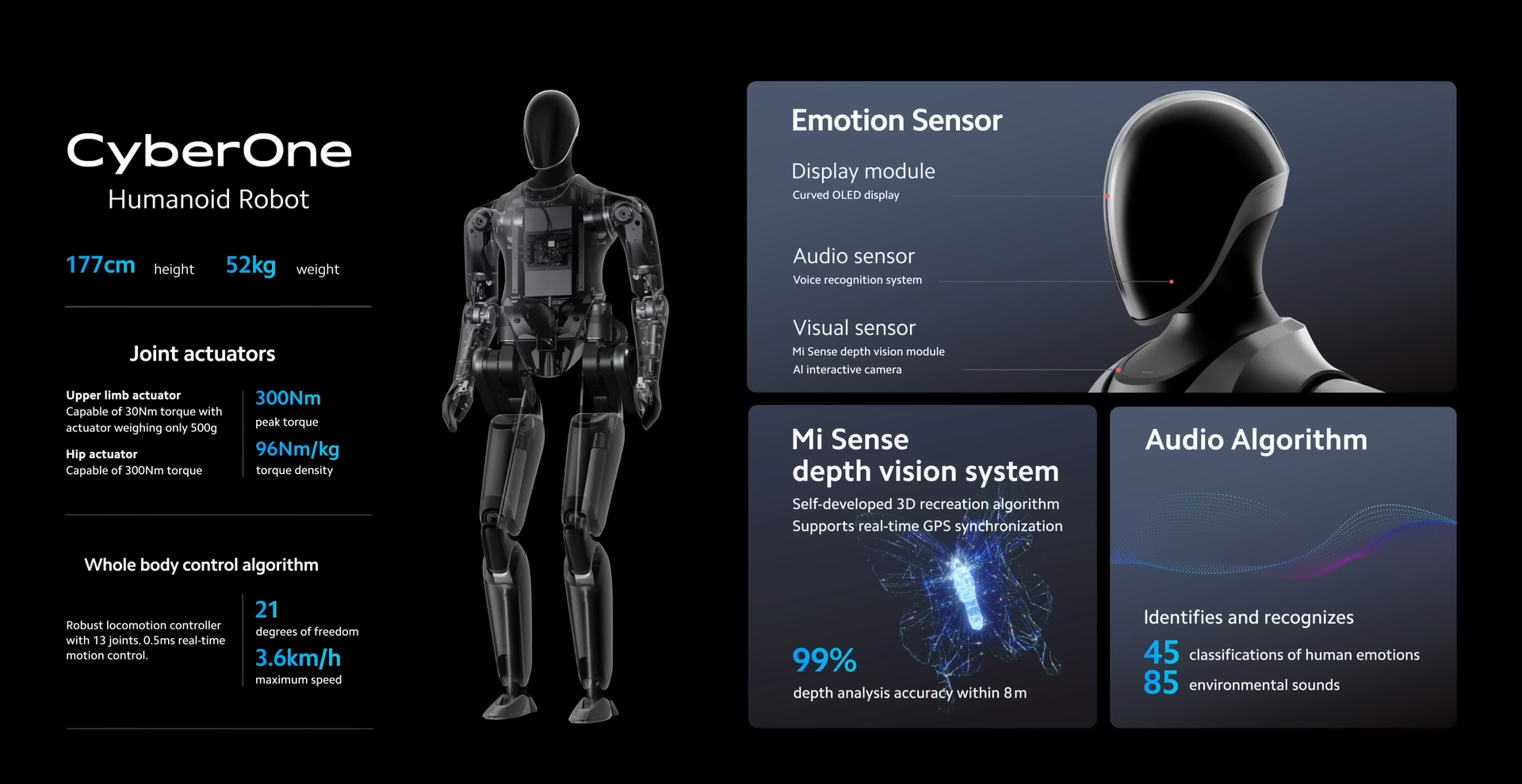
Advanced Perception Systems: The AI-driven perception and cognition systems have been upgraded. These enhancements enable CyberOne to interact more effectively with its environment, recognizing and responding to a wider array of stimuli.
New Capabilities: CyberOne can now perform a broader range of tasks and functions. These new capabilities expand the robot’s utility, making it more versatile in different settings.
| Feature | Description |
|---|---|
| Improved Mobility and Strength | Enhancements in joint actuators provide greater flexibility and power for complex movements. |
| Advanced Perception Systems | Upgraded AI-driven systems improve interaction and understanding of the environment. |
| New Capabilities | Introduction of new tasks and functions, expanding CyberOne's utility in various applications. |
These advancements reflect Xiaomi’s ongoing dedication to refining and expanding the capabilities of CyberOne, ensuring it remains at the forefront of humanoid robotics.
Integration in Manufacturing: A Factory Floor First Look
Having dazzled audiences with its emotional intelligence and human-like movement, Xiaomi's CyberOne may soon step out of the lab and onto the factory floor. This marks a significant shift for the ambitious project, transitioning from a technological marvel to a potential game-changer in industrial automation.
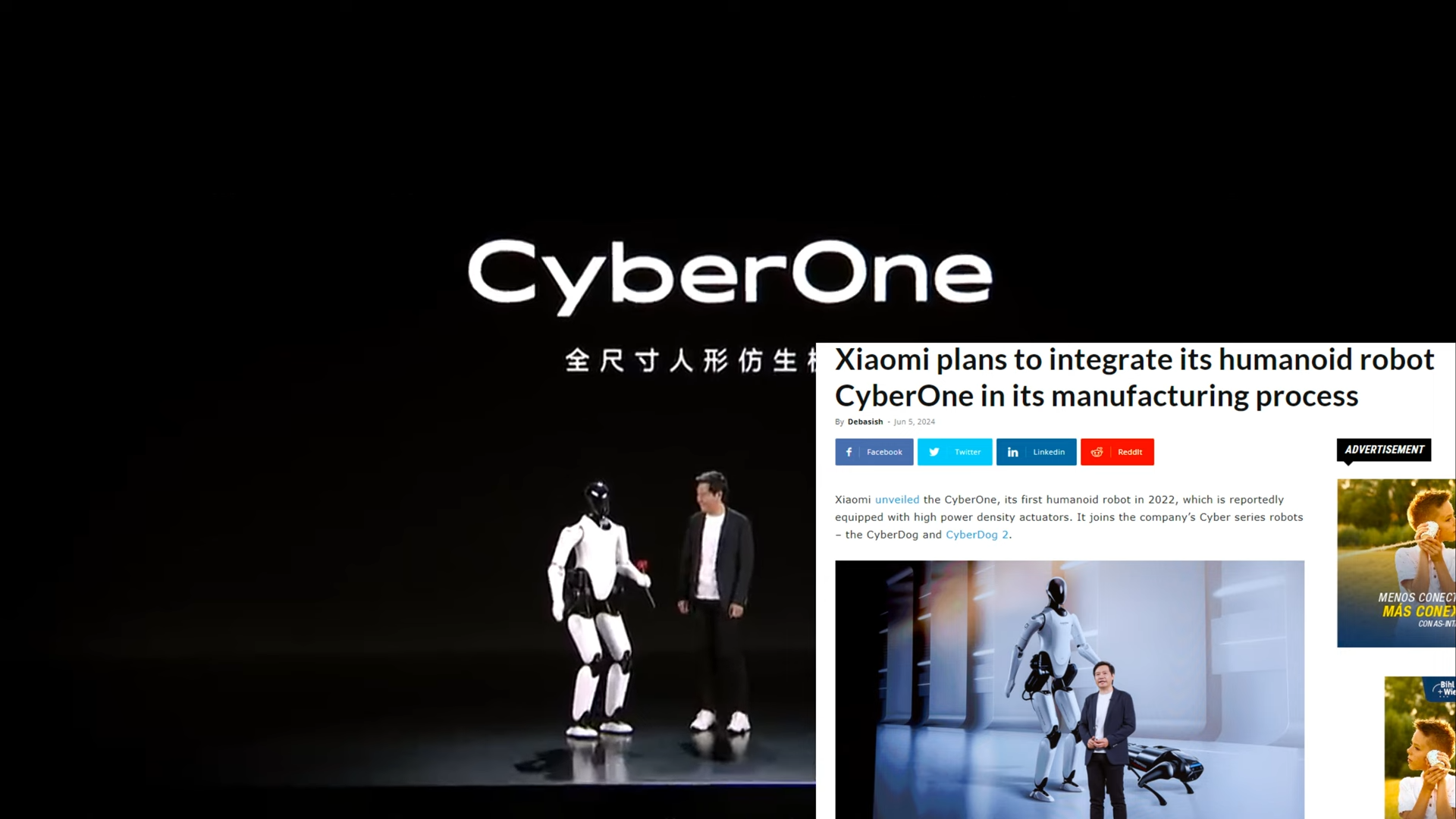
Current Implementation: A Cautious Embrace
Xiaomi Robotics reveal a measured approach to CyberOne's integration. Initial deployments focus on controlled environments with dedicated workstations. This allows for close monitoring and fine-tuning of the robot's performance while minimizing disruption to existing production lines.
Task Automation: More Than Meets the Mechanical Eye
Early applications for CyberOne center on tasks that leverage its unique capabilities. These include:
Machine Tending:
Imagine a tireless assistant, adept at loading and unloading materials, freeing human workers for more complex tasks.
Quality Control:
CyberOne's sharp "eyes" and precise movements make it ideal for identifying defects on production lines with unmatched consistency.
Assembly Line Support:
Repetitive tasks like component placement or simple assembly processes can be seamlessly handled by CyberOne, boosting overall production speed.
Efficiency and Productivity Gains: The Numbers Tell the Story
While official data on productivity gains remains under wraps, early signs are promising. Internal estimates suggest a future potential 15-20% increase in efficiency for specific tasks. However, seasoned industry analysts caution against overenthusiasm.

The true impact of CyberOne will depend on factors like successful integration with existing infrastructure and the development of more sophisticated task management protocols.
One thing remains clear: Xiaomi's foray into factory automation with CyberOne could be a bold move. As the technology matures and its capabilities expand, we may be witnessing the dawn of a new era for human-robot collaboration on the factory floor.
a future with cyberOne in factories is looking clearer, as Xiomi has recently launched a factory with no humans. Although the robots currently working inside are not humanoids, this is a pivotal shift in the companies dynamics toward autonomous factories and the possible shift to humanoids in factory settings. This initial implementation is a crucial first step, and future developments in this space promise to be fascinating to follow.
Xiaomi showing off its human-less factory
Expansion into New Sectors
CyberOne's potential extends far beyond the factory walls. Xiaomi is actively exploring its application in diverse sectors, with a focus on tasks requiring dexterity, human interaction, and environmental awareness.
Healthcare and Nursing Homes:
Imagine a gentle companion assisting with daily tasks, medication reminders, and even emotional support for patients. Early trials in controlled settings suggest CyberOne could be a valuable asset in elder care and rehabilitation facilities.
Hospitality and Retail:
Envision a tireless concierge navigating guests through hotels or a helpful guide assisting shoppers in malls. CyberOne's ability to understand and respond to human queries could revolutionize customer service experiences.
Public Spaces:
Picture a security assistant patrolling airports or a friendly guide offering information in museums. CyberOne's mobility and adaptability make it a potential game-changer in managing public spaces.
While these are just a glimpse of the possibilities, the successful integration of CyberOne in these new sectors will hinge on its ability to adapt to diverse environments and interact seamlessly with humans. We can expect continued development and refinement as Xiaomi pushes the boundaries of human-robot collaboration across various industries.
Addressing Challenges: The Road Ahead
CyberOne's journey from groundbreaking prototype to versatile industrial partner is paved with challenges. Here's a look at how Xiaomi is tackling some of the key hurdles:
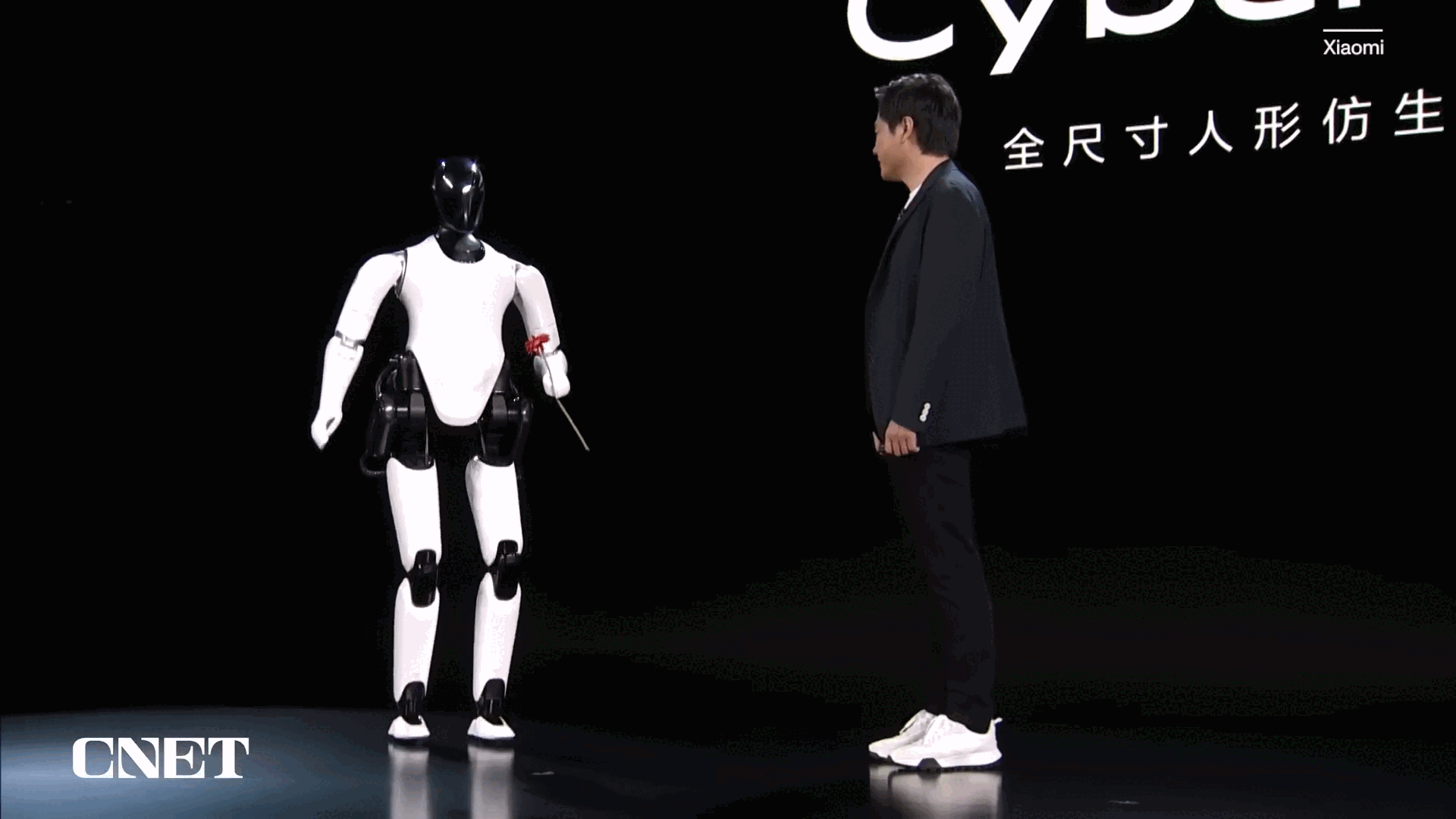
Cost Reduction: Bringing Down the Barrier
Currently, CyberOne's price tag remains a significant obstacle for widespread adoption(with an estimated $89,000 - $104,000 per uni). Xiaomi acknowledges this, and their engineers are actively working on cost-reduction strategies, including optimizing material usage and streamlining manufacturing processes.
Technical and Ethical Considerations: Safety, Reliability, and the Human Factor
Safety and reliability are paramount. Xiaomi is rigorously testing CyberOne to ensure seamless integration with existing infrastructure and minimize operational risks. Ethical considerations surrounding potential job displacement are also being addressed. The focus lies on CyberOne as a collaborative tool, augmenting human capabilities rather than replacing them.
User Training and Maintenance: Simplifying the Experience
Making CyberOne user-friendly is crucial. Xiaomi is developing intuitive training programs for operators and exploring advancements in self-diagnostics and maintenance to minimize downtime.
As with any pioneering technology, challenges remain. However, Xiaomi's commitment to continuous improvement suggests a bright future for CyberOne's integration across various industries.
Competitive Landscape: Sharing the Spotlight
The humanoid robotics space is heating up, with several players vying for dominance. Here's how CyberOne stacks up against the competition:
Comparison with Other Humanoids:
| Robot | Target Area | Key Strengths |
|---|---|---|
| Tesla Optimus | Factory automation | Impressive strength, while CyberOne emphasizes emotional intelligence and adaptability. |
| Boston Dynamics' Atlas | Dynamic environments | Known for parkour skills and excelling in dynamic settings, while CyberOne prioritizes human interaction and task completion. |
| Xiaomi CyberOne | Human interaction and task completion | Emphasizes emotional intelligence, adaptability, and advanced AI for recognizing emotions and performing various tasks. |
While each robot possesses unique strengths, CyberOne's affordability (if cost reduction efforts succeed) and focus on human-centric design could be key differentiators.
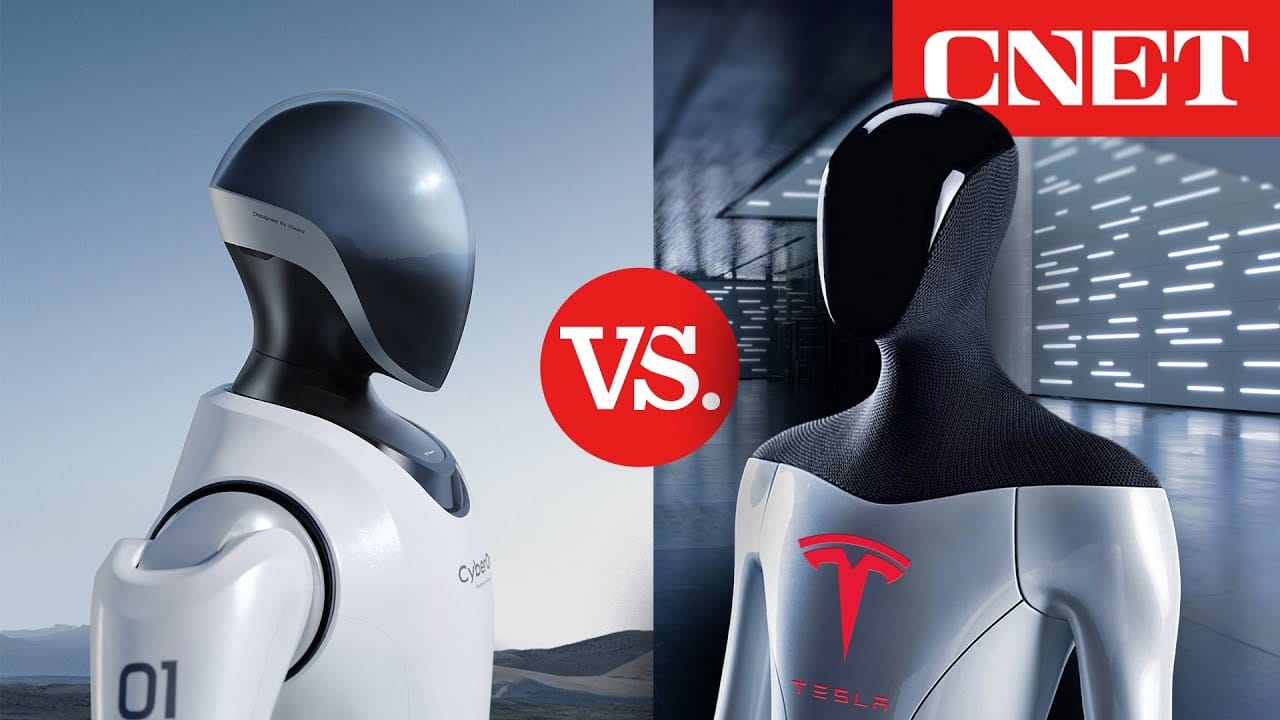
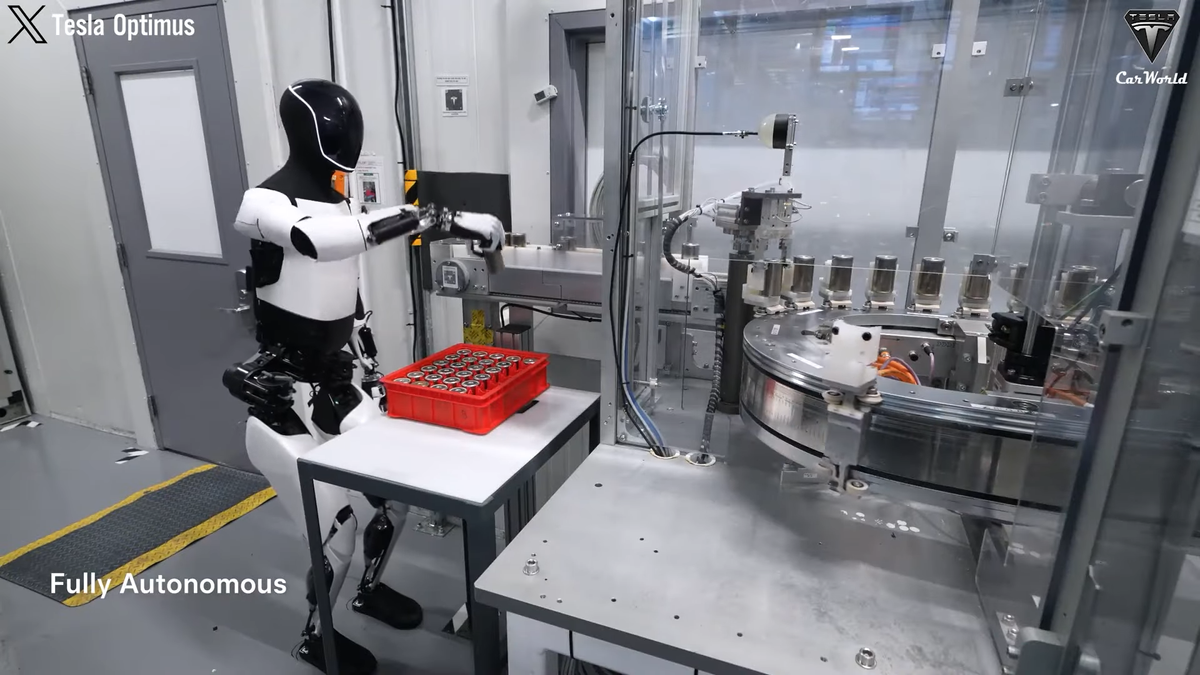
Read a recent article on Optimus!
Market Position: Xiaomi's Robotics Gambit
Xiaomi's strategy appears two-pronged:
- Early Adoption in Core Industries: Securing a foothold in manufacturing with CyberOne provides valuable real-world data for further development.
- Diversification Across Sectors: Exploring applications in healthcare, hospitality, and public spaces broadens CyberOne's reach and potential market share.
Xiaomi's ultimate goal seems to be establishing itself as a leader in the human-robot collaboration revolution, not just within factories, but across a wide range of applications.
Future Prospects
Roadmap for Development: Xiaomi has ambitious plans for the future of CyberOne. Upcoming developments include enhanced AI capabilities for more complex interactions, improved mobility for navigating diverse environments, and integration with IoT devices for smarter and more connected operations. Xiaomi aims to make CyberOne even more adaptable and efficient, with the potential to take on more sophisticated tasks across various industries.
Broader Implications: The advancements in CyberOne are likely to have significant impacts on the robotics industry and the global economy. By improving automation and efficiency, CyberOne can lead to reduced labor costs and increased productivity in manufacturing and other sectors. Additionally, the emphasis on emotional intelligence and adaptability positions CyberOne as a versatile tool in both industrial and social settings, potentially transforming how humans interact with robots on a daily basis.
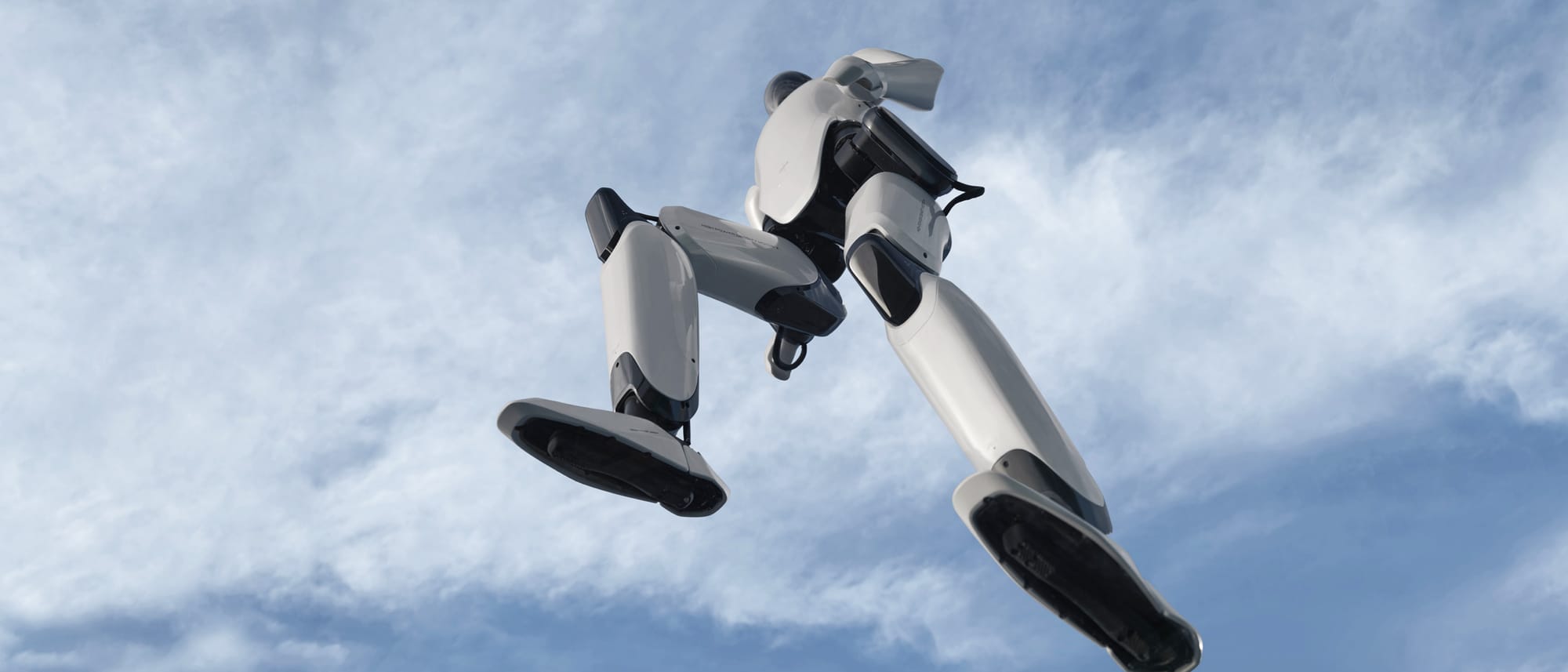
Xiaomi's CyberOne has made notable progress since its initial release. With improved mobility, advanced perception systems, and new capabilities, CyberOne is becoming an increasingly valuable asset in various applications.
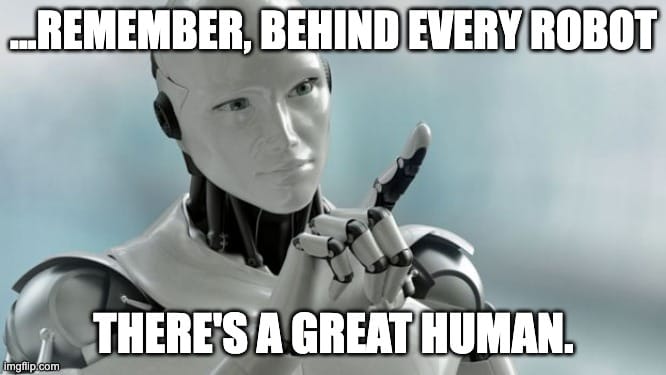

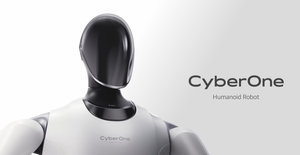


![From Tesla to BMW, humanoids are on their way [to your] home](/content/images/size/w300/2024/02/top_humanoids.png)
